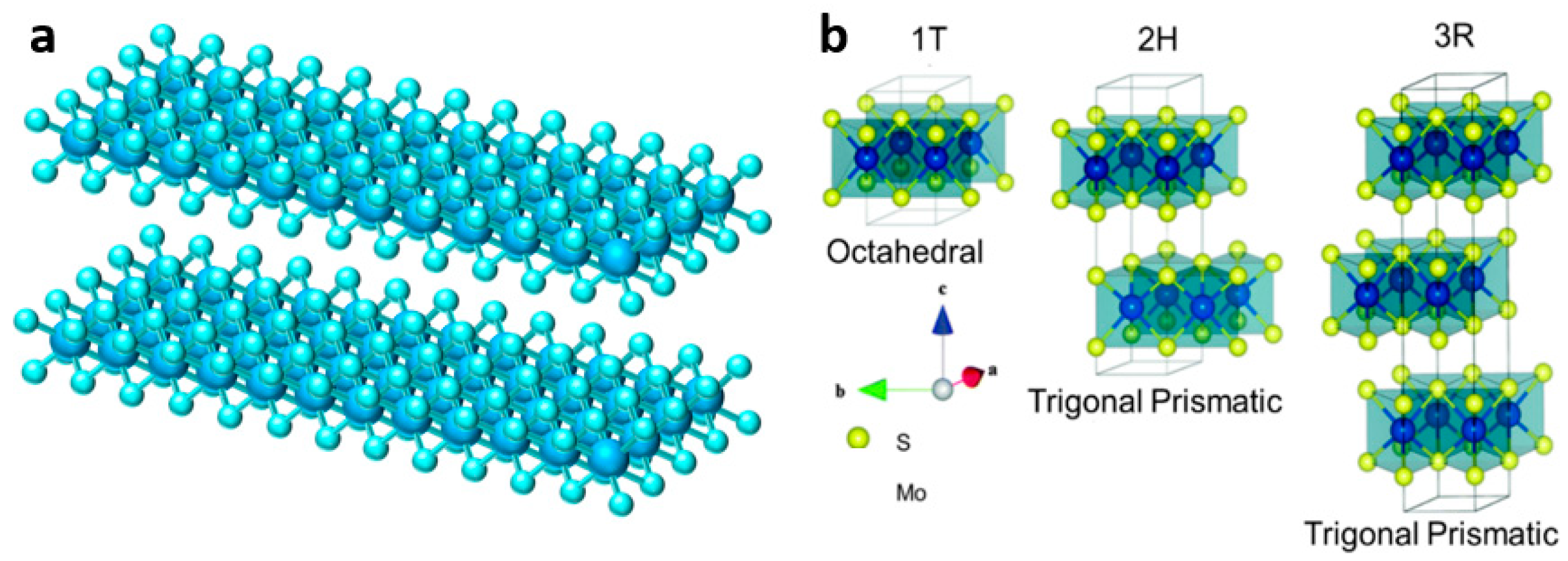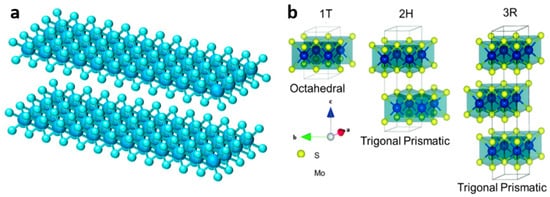You're using an outdated browser. Please upgrade to a modern browser for the best experience.
Please note this is a comparison between Version 1 by Aokui Sun and Version 2 by Camila Xu.
Owing to the unique layered structure and more desirable layer spacing, transition metal dichalcogenide (TMD) materials are considered as the comparatively ideal cathode material of ZIBs which facilitate the intercalation/ deintercalation of hydrated Zn2+ between layers.
- transition metal dichalcogenides
- aqueous zinc ion batteries
- modification strategy
1. Introduction
Due to the deterioration of the environment and the deficit of fossil energy, it is increasingly important to develop environmentally friendly, sustainable, and renewable energy [1][2][3]. At present, some renewable energy power generation can meet the requirements of environmental protection and sustainable development, such as solar power, wind power, and tidal power generation, but these energy sources suffer from regional limitations and instability, limiting their wider application. As an important part of energy for sustainable development, electrochemical energy storage has become an active research field in recent decades [4][5][6]. In the current energy market, lithium-ion batteries (LIBs) are dominant in automobile, medical equipment, portable wearable equipment, and other industries because of their excellent energy density and good environmental performance [7][8]. However, most lithium-ion batteries use organic solvents as electrolytes, which may cause safety problems and increase costs [9][10][11][12]. Compared with non-aqueous batteries, aqueous rechargeable batteries have the characteristics of low cost, non-toxicity, and non-flammability, which makes them safer, more environmentally friendly, and more economical [13][14][15].
In addition to LIBs, many other rechargeable aqueous metal ion batteries have been developed, including sodium ion batteries [16], potassium ion batteries [17], aluminum ion batteries [18], calcium ion batteries [19], and zinc ion batteries. Compared with other rechargeable aqueous metal ion batteries, zinc ion batteries have many advantages [20][21][22]: (1) Zinc ion batteries can be directly assembled in the air without inert environment, which can reduce the battery assembly cost. (2) Zinc ions can be electrodeposited reversibly in aqueous solution, so the zinc sheet can be directly used as the anode of the battery. (3) Zinc as anode has a higher theoretical capacity and lower oxidation/reduction potential (–0.76 V) than the standard hydrogen electrode, which indicates that there is a higher open circuit voltage when coupled with cathode. Therefore, in many rechargeable water-based metal ion batteries, the research on aqueous zinc ion batteries is increasingly concerned.
As shown in
1. Introduction
Due to the deterioration of the environment and the deficit of fossil energy, it is increasingly important to develop environmentally friendly, sustainable, and renewable energy [1,2,3]. At present, some renewable energy power generation can meet the requirements of environmental protection and sustainable development, such as solar power, wind power, and tidal power generation, but these energy sources suffer from regional limitations and instability, limiting their wider application. As an important part of energy for sustainable development, electrochemical energy storage has become an active research field in recent decades [4,5,6]. In the current energy market, lithium-ion batteries (LIBs) are dominant in automobile, medical equipment, portable wearable equipment, and other industries because of their excellent energy density and good environmental performance [7,8]. However, most lithium-ion batteries use organic solvents as electrolytes, which may cause safety problems and increase costs [9,10,11,12]. Compared with non-aqueous batteries, aqueous rechargeable batteries have the characteristics of low cost, non-toxicity, and non-flammability, which makes them safer, more environmentally friendly, and more economical [13,14,15].
In addition to LIBs, many other rechargeable aqueous metal ion batteries have been developed, including sodium ion batteries [16], potassium ion batteries [17], aluminum ion batteries [18], calcium ion batteries [19], and zinc ion batteries. Compared with other rechargeable aqueous metal ion batteries, zinc ion batteries have many advantages [20,21,22]: (1) Zinc ion batteries can be directly assembled in the air without inert environment, which can reduce the battery assembly cost. (2) Zinc ions can be electrodeposited reversibly in aqueous solution, so the zinc sheet can be directly used as the anode of the battery. (3) Zinc as anode has a higher theoretical capacity and lower oxidation/reduction potential (–0.76 V) than the standard hydrogen electrode, which indicates that there is a higher open circuit voltage when coupled with cathode. Therefore, in many rechargeable water-based metal ion batteries, the research on aqueous zinc ion batteries is increasingly concerned.
As shown in
Figure 1
a, the aqueous zinc ion battery (ZIB) is mainly composed of the battery shell, cathode material, anode material, electrolyte, and diaphragm. There are many kinds of cathode materials, including manganese-based materials [23], vanadium-based materials [24], and Prussian blue analogues [25], all of which possess a certain capacity of Zn
2+
storage. Since the theoretical interlayer spacing of transition metal disulfide compounds is larger than the diameter of Zn
2+
, Zn
2+
can be intercalated and deintercalated in TMD material, which also indicates that TMD material is feasible as the cathode of ZIB [26]. At present, few studies have been conducted on TMD as a cathode material of ZIB, and there is not a systematic exposition, which also shows from the aspect that TMD as cathode of ZIB is quite novel.
Figure 1
b displays the trend of the increasing number of publications, evidencing the increasing attention paid to TMD materials in ZIB. The latest research progress of TMD series materials as cathodes of ZIB in recent years is reviewed in this paper, and several modification methods which can improve the Zn
2+ storage capacity and structural stability of TMD materials are expounded.

storage capacity and structural stability of TMD materials are expounded.

Figure 1.
(
a
) Disassembly diagram of coin-type ZIBs; (
b
) The trend of publications on TMDs as ZIBs cathode materials.
2. Characterization and Synthetic Methods of TMD
Two-dimensional layered transition metal disulfides (TMDs) generally have X-M-X structure, where M is the transition metal, such as molybdenum, vanadium, tungsten, bismuth, and other metal elements, while X is generally sulfur, selenium, and other elements, as shown in
2. Characterization and Synthetic Methods of TMD
Two-dimensional layered transition metal disulfides (TMDs) generally have X-M-X structure, where M is the transition metal, such as molybdenum, vanadium, tungsten, bismuth, and other metal elements, while X is generally sulfur, selenium, and other elements, as shown in
Figure 2a. These layered structures facilitate the transport of various carriers and can also adapt to the volume change during ion insertion. Because of their different chemical composition and unique crystal structure, as well as the fact that the d-orbitals can be filled with different elements, TMDs can be used as functional materials for electronic insulation, semiconductors, and superconductivity [27].
Among all TMDs materials, molybdenum disulfide (MoS2) has received extensive attention as a typical representative. Molybdenum disulfide is composed of two layers of sulfur atoms and one layer of molybdenum atoms, with the metal molybdenum layer interposed between the two sulfur layers, alternately stacked to form a sandwich-like structure. The sulfur atoms are bound together by van der Waals force, while the S-Mo-S atoms are linked by strong covalent bonds [28][29]. MoS2 not only has a layered structure, but also has different phases (1T, 2H, and 3R), and each phase also has different physical properties and chemical characteristics [30]. As shown in
a. These layered structures facilitate the transport of various carriers and can also adapt to the volume change during ion insertion. Because of their different chemical composition and unique crystal structure, as well as the fact that the d-orbitals can be filled with different elements, TMDs can be used as functional materials for electronic insulation, semiconductors, and superconductivity [27].
Among all TMDs materials, molybdenum disulfide (MoS2) has received extensive attention as a typical representative. Molybdenum disulfide is composed of two layers of sulfur atoms and one layer of molybdenum atoms, with the metal molybdenum layer interposed between the two sulfur layers, alternately stacked to form a sandwich-like structure. The sulfur atoms are bound together by van der Waals force, while the S-Mo-S atoms are linked by strong covalent bonds [28,29]. MoS2 not only has a layered structure, but also has different phases (1T, 2H, and 3R), and each phase also has different physical properties and chemical characteristics [30]. As shown in
Figure 2b, MoS2 in 2H and 3R phases both demonstrate the triangular prismatic coordination of Mo atoms, and 2H-MoS2 is very stable because of the two layers of units stacked in hexagon symmetry. Meanwhile, 3R-MoS2 has rhombus symmetry, and each unit has three layers. On the contrary, the Mo atoms of 1T-MoS2 (metal phase) are octahedral coordinated and most unstable [31][32]. VS2 is also a common material in TMDs, where the sulfur and vanadium layers are stacked together in a sandwich-like structure by van der Waals force interactions [33][34]. Due to the large interlayer spacing, VS2 has great potential in the intercalation/deintercalation of ions, such as Li
b, MoS2 in 2H and 3R phases both demonstrate the triangular prismatic coordination of Mo atoms, and 2H-MoS2 is very stable because of the two layers of units stacked in hexagon symmetry. Meanwhile, 3R-MoS2 has rhombus symmetry, and each unit has three layers. On the contrary, the Mo atoms of 1T-MoS2 (metal phase) are octahedral coordinated and most unstable [31,32]. VS2 is also a common material in TMDs, where the sulfur and vanadium layers are stacked together in a sandwich-like structure by van der Waals force interactions [33,34]. Due to the large interlayer spacing, VS2 has great potential in the intercalation/deintercalation of ions, such as Li
+
, Na
+
, Zn
2+
, Mg
2+
, and Al


Figure 2.
(
a
) Illustration of TMD structure; (
In order to obtain layered and nanoflower-like sulfide materials, TMD materials are generally prepared by hydrothermal and solvothermal methods. The synthetic methods of TMD materials as ZIB cathode are summarized in
In order to obtain layered and nanoflower-like sulfide materials, TMD materials are generally prepared by hydrothermal and solvothermal methods. The synthetic methods of TMD materials as ZIB cathode are summarized in
Table 1
.
Table 1. Fabrication methods, precursors and synthesis conditions of TMDs as ZIBs cathode.
Fabrication methods, precursors and synthesis conditions of TMDs as ZIBs cathode.
| |||||
|---|---|---|---|---|---|
| |||||
| |||||
Products | |||||
| Method | Precursors | Temperature | Duration | Ref |
| MoS2−x | Hydrothermal | (NH4)6Mo7O24·4H2O, TAA | 200 °C | 18 h | [38] |
| E- MoS2 | Hydrothermal | Na2MoO4, CS(NH2)2, carbon cloth, glucose, HCl | 190 °C | 24 h | [39] |
| MoS2-O | Hydrothermal | (NH4)6Mo7O24·4H2O, thiourea | 180 °C | 24 h | [40] |
| MoS2·nH2O | Hydrothermal | (NH4)6Mo7O24·4H2O, thiourea | 170 °C | 24 h | [41] |
| MoS2/PANI | Solvothermal | Na2MoO4, thiourea, C17H33CO2Na, ethanol, OA, HCl | 180 °C | 24 h | [42] |
| MoS2@CNTs | Hydrothermal | Na2MoO4·2H2O, thiourea, CNTs, glucose | 200 °C | 24 h | [43] |
| MoS2-160 | Hydrothermal | (NH4)6Mo7O24·4H2O, thiourea | 160 °C | 24 h | [44] |
| VS2 | Hydrothermal | NH4VO3, TAA, NH3·H2O | 180 °C | 20 h | [45] |
| VS2@SS | Hydrothermal | NH4VO3, TAA, NH3·H2O, stainless steel mesh | 180 °C | 10 h | [46] |
| rGO-VS2 | Solvothermal | VO(acac)2, cysteine, GO, NMP | 200 °C | 8 h | [47] |
| VS2@VOOH | Hydrothermal | V2O5, TAA, NH3·H2O | 180 °C | 18 h | [48] |
| VS2·NH3 | Solvothermal | VO(acac)2, TAA, NMP | 200 °C | 24 h | [49] |
| VS2/VOx | Solvothermal | Na3VO4·12H2O, TAA, ethylene | 180 °C | 20 h | [50] |
| 1T-WS2 | Solvothermal | WCl6, TAA, DMF | 200 °C | 24 h | [51] |
| VSe2 | Chemical Liquid Phase Synthesis | VO(acac)2, Se powder, OAm | 330 °C | 5 h | [52] |
